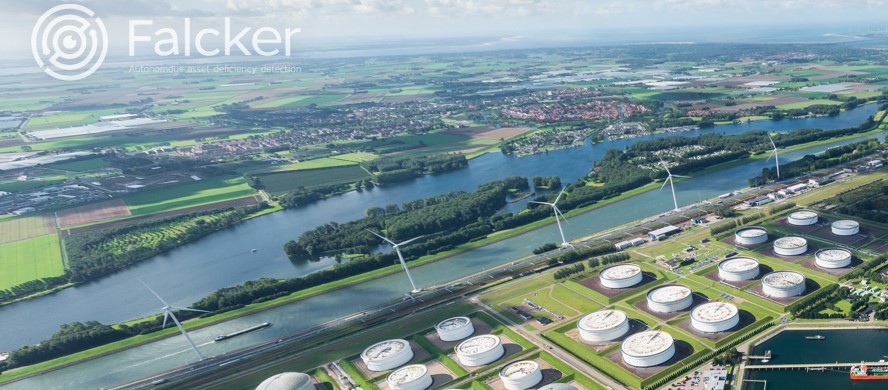Falcker provides the energy industry with the tech and tools needed to assess their equipment. Working with the world’s biggest energy companies they’ve helped these giants save time and money as well as increase safety and compliance.
But, what’s their history? What drives them? Well, in short, they want to be a disruptive force in the market and bring an all-in-one solution that can be used globally. They aren’t content to just stay where they are either – they’ve got big plans.
Scanning
With humble origins at the start of 2017, Falcker began life as a hobby project between 2 friends. At the weekend the Falcker founders would use their drones and the software they had begun to develop to help potato farmers assess land and help crop growth in a data-driven way. This developed to working with everyone from world-renowned potato chip makers, McCain, as well as Wageningen Agricultural University.
Now focused on the energy sector, the Falcker technology package is being used to help large-scale facilities remotely inspect their storage tanks. These drone-based tank assessments have helped Falcker become what they are today with the initial project being sponsored by a group of the big oil players – Falcker now works with BP, SABIC, and Vopak, to name a few.
Mitigating risk is a huge part of what energy companies do – due to the nature of their work and its scale. Issues with storage can have immediate health and safety implications on operators, and wider implications for the environment – in the event of spills and leaks. This is hugely expensive and something they want to avoid at all costs. With a lot of compliance and safety standards to adhere to, oil companies must regularly inspect all their storage facilities.
Having an inspection system that uses drones takes away a big part of operator risk. Once the data is collated within the Falcker software platform it’s completely accessible by the different teams who need the information – that could be operations, health and safety, or quality control. It can be hard to innovate when working with bog customers but Falcker has proven that good ideas rise to the surface.
Before there were drones doing this, people would go to the sites and use a pen and paper checklist to make an assessment. Now the process is digitized, adding safety, and saving money.
Looking Ahead
Seeing the success they have had in the petrochemical niche, they’ve got their sights set on expansion into the renewable energy market as well as possible sideline work within construction. Their technology package can work in so many industrial applications that the sky really is the limit.
To help further growth, Falcker has paired with Percepto to become an exclusive reseller of their drone in a box system. Drones can be left at sites across the world ready to feedback data after a quick on-site setup. Rather than real autonomy, the drone can be pre-programmed with flight paths that will cover the tanks on site. You still need the intelligence of the assessor reviewing the data but more and more that person can be anywhere in the world. Falcker has built a collaborative technology that brings together on-site hardware and off-site personnel.
Because they’ve already established themselves in ARA, Amsterdam–Rotterdam–Antwerp, they can now begin to work with their global partners further afield. Following a successful project in Singapore, they’ll now be establishing an office there in 2022. But they don’t want to stop there. With 4 major energy hubs around the world, they want to complete the set with a setup in Houston as well as the Middle East.
From potatoes to petrol it’s been quite the journey for Falcker so far, and it’s certainly exciting to think how far they’ll get in the next 5 years – watch this space.
Falcker helps the energy industry increase safety and compliance while saving money. Contact us today.


Leave a Reply